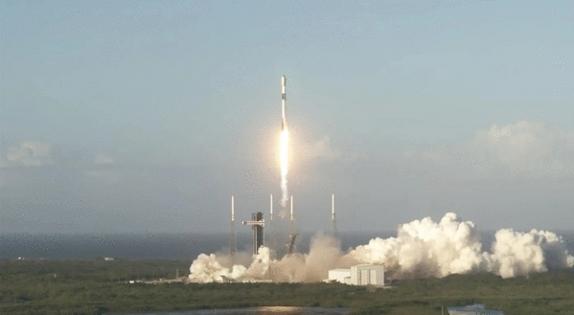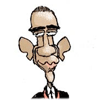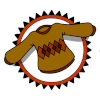SpaceX launches space station resupply mission with sonic boom warning from booster return
Published in News & Features
ORLANDO, Fla. — SpaceX sent up 6,000 pounds of cargo on a resupply mission to the International Space Station on Monday night with the rocket booster’s return trip bringing a sonic boom to parts of Central Florida.
A Falcon 9 on the CRS-31 mission lifted off from Kennedy Space Center’s Launch Pad 39-A at 9:29 p.m. EST.
The first-stage booster made its fifth flight, having notably flown two human spaceflight missions with Crew-8 in March and September’s Polaris Dawn flight as well as two Starlink missions.
It then made a recovery return back on land at nearby Cape Canaveral Space Force Station’s Landing Zone 1 about eight minutes after liftoff.
SpaceX had earlier warned that one or more sonic booms may be heard in Brevard, Orange, Osceola, Indian River, Seminole, Volusia, Polk, St. Lucie, and Okeechobee counties.
The cargo Dragon is making its fifth resupply mission to the ISS, and is slated to arrive after about a 13-hour flight, docking Tuesday at 10:15 a.m.
While attached, SpaceX will be trying out a new reboost capability to see if it can successfully raise the altitude of the ISS, something normally taken care of by Russian Progress cargo vehicles. The test reboost follows similar test boosts performed by Northrop Grumman’s Cygnus cargo module in the past few years. SpaceX won the contract to eventually take on the role of removing the ISS from orbit through a special spacecraft built on Dragon technology, an endeavor not slated until after 2030.
It will remain attached to the ISS until December when it will return for a splashdown back on Earth, possibly one of the final times a Dragon spacecraft lands off the coast of Florida before SpaceX shifts Dragon recovery operations back to California in 2025.
Among the 6,000 pounds of food, supplies and equipment are some new experiments.
They include the solar wind Coronal Diagnostic Experiment, some Antarctic moss to observe the effects of cosmic radiation and microgravity on plants, a device to test cold welding of metals in microgravity, and an investigation that studies how space impacts different materials.
The spacecraft will dock with the ISS at the recently vacated parking spot on the front-facing port of the ISS’ Harmony module. Four of the seven crew currently on board the ISS had climbed on board the SpaceX Crew Dragon Freedom on Sunday to move it to the space-facing port on Harmony and make room for the cargo module’s arrival, an operation that took less than an hour.
The Dragon shuffle was of note as it marked the first time NASA astronauts have flown on board both Boeing’s Starliner and SpaceX’s Dragon spacecraft. That’s because among the four crew on board Freedom were not only the two members who flew up to the ISS in September, but also the two NASA astronauts of the Crew Flight Test that had arrived to the ISS on Boeing’s Starliner back in June.
Butch Wilmore and Suni Williams, who were left behind on the ISS when NASA opted to send the Starliner back to Earth in September minus its crew for safety reasons, are now officially part of the SpaceX Crew-9 crew, in addition to being members of Expedition 72 on the ISS.
They took the two seats on Crew Dragon Freedom that they will use when they finally get to return to Earth next February.
The CRS-31 launch adds onto the already record-breaking year on the Space Coast, marking the 75th from all launch providers. SpaceX has flown 70 of those, with United Launch Alliance having flown the other five.
It was the 19th launch from KSC for the year with the other 56 from among the pads at Cape Canaveral.
_____
©2024 Orlando Sentinel. Visit orlandosentinel.com. Distributed by Tribune Content Agency, LLC.







Comments